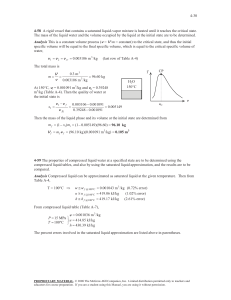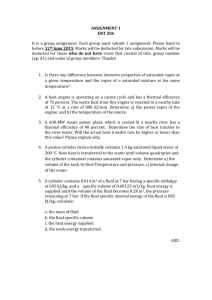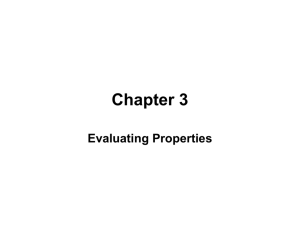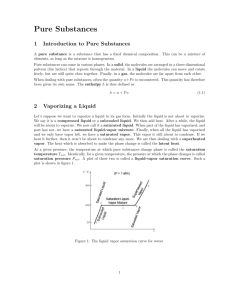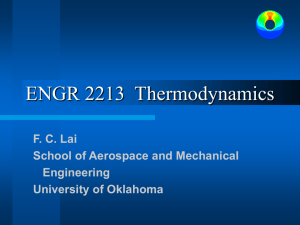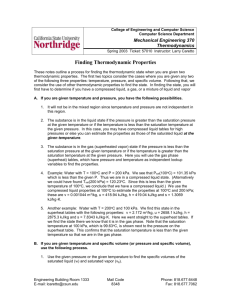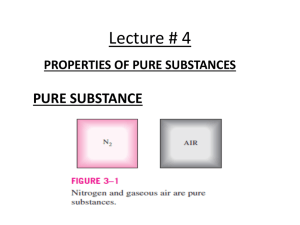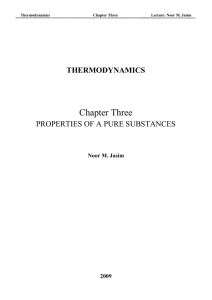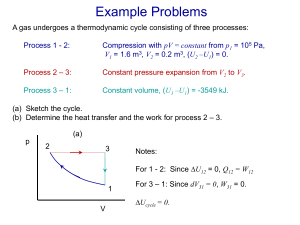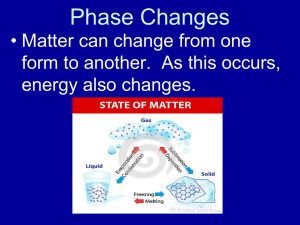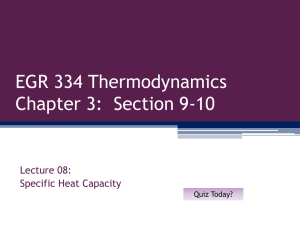ES202 - Fluid & Thermal Systems Objectives for the study of
advertisement
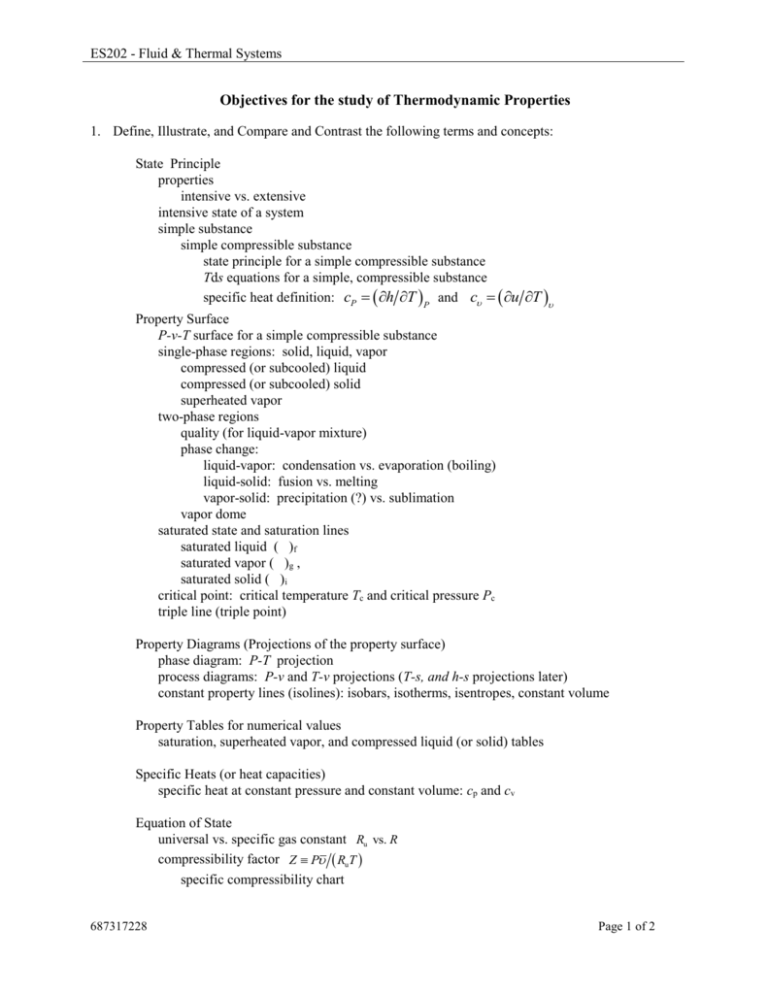
ES202 - Fluid & Thermal Systems Objectives for the study of Thermodynamic Properties 1. Define, Illustrate, and Compare and Contrast the following terms and concepts: State Principle properties intensive vs. extensive intensive state of a system simple substance simple compressible substance state principle for a simple compressible substance Tds equations for a simple, compressible substance specific heat definition: cP h T P and c u T Property Surface P-v-T surface for a simple compressible substance single-phase regions: solid, liquid, vapor compressed (or subcooled) liquid compressed (or subcooled) solid superheated vapor two-phase regions quality (for liquid-vapor mixture) phase change: liquid-vapor: condensation vs. evaporation (boiling) liquid-solid: fusion vs. melting vapor-solid: precipitation (?) vs. sublimation vapor dome saturated state and saturation lines saturated liquid ( )f saturated vapor ( )g , saturated solid ( )i critical point: critical temperature Tc and critical pressure Pc triple line (triple point) Property Diagrams (Projections of the property surface) phase diagram: P-T projection process diagrams: P-v and T-v projections (T-s, and h-s projections later) constant property lines (isolines): isobars, isotherms, isentropes, constant volume Property Tables for numerical values saturation, superheated vapor, and compressed liquid (or solid) tables Specific Heats (or heat capacities) specific heat at constant pressure and constant volume: cp and cv Equation of State universal vs. specific gas constant Ru vs. R compressibility factor Z P RuT specific compressibility chart 687317228 Page 1 of 2 ES202 - Fluid & Thermal Systems Substance Models principle of corresponding states generalized compressibility chart reduced temperature (Tr = T/Tc) reduced pressure (Pr = P/Pc) pseudo-reduced specific volume ('r = /[RTc /Pc] ) used to relate P- - T and test applicability of ideal gas model ideal gas model key assumptions and consequences relating P, , and T ideal-gas (zero-pressure) specific heats calculating s, u, and h using average specific heats or the ideal gas property tables incompressible substance model key assumptions and consequences relating P, , and T specific heat for an incompressible substance calculating s, u, and h using average specific heats 2. Given a description of a process and/or the state of a system, carefully sketch the process and/or locate the state on a phase or process diagram. Sketches should accurately show the relative position of process lines and states with respect to saturation lines, pertinent isobars and isotherms, the triple line, and the critical point. (In other words, show some “road signs” on your “property map.”) 3. Given any two independent, intensive properties selected from the following list—P, T, h, u, v, x, and s— and a set of property tables or charts, determine the physical phase of the substance: compressed liquid (or solid); saturated liquid, saturated vapor, or saturated solid; superheated vapor; or two-phase mixture, the numerical values for the remaining properties in the list, and the location of the state on a process or phase diagram. 4. Given an ideal gas, use the ideal gas tables OR the average-specific-heat concept and a table of specific heat values to calculate all pertinent properties and property changes. Know the difference between these two approaches and be able to use either approach if requested. 5. Given two of the three properties P, and T, use the generalized compressibility chart to 1) estimate the accuracy of the ideal gas model for a specific set of conditions, and 2) estimate the value of P, or T given values for the other two. 6. Given a problem statement that requires that you find thermodynamic properties, (a) determine which of the following approaches is best for accurately evaluating the required thermodynamic properties, and then (b) use the selected approach to determine the necessary information: 1) the property tables and charts for the substance (no model), 2) the compressed liquid/solid approximation using saturated liquid/solid data to estimate the properties of a compressed liquid/solid, 3) the incompressible substance model, 4) the generalized compressibility chart to predict the relationship between P, , and T or 5) the ideal gas model. 687317228 Page 2 of 2
